| Crown Colony class
Light Cruisers |
| |
| The Crown
Colony class Light cruisers were built in two sub
groups, the Fiji and the Uganda / Ceylon classes. |
| B/W photos
courtesy of The Royal Navy Ships of Victor Johns |
| |
 |
| 1:600 Fiji group. Note the
pom-poms and directors on the hangar, the standard two
sided twin 4" AA enclosing the torpedoes and the
0.5" AA MG's aft. Also, the director on
"X" turret. © Andrew Arthur |
 |
| 1:600 HMS Gambia in 1944.
Six 20mm AA have been added, as well as additional
searchlights and barrage directors aft of the after
HA/DCt and forward of the bridge. The aircraft has been
removed, and the boats moved to the former runway. ©
Andrew Arthur |
These were the first and only British cruisers
designed within the 8000-ton limit specified by the London Naval
Treaty. They were designed with the same armament as the heavier
"Southampton" Class, weight being saved by a reduction
in armour protection and machinery which allowed for a smaller
hull, producing the greatest saving of 450 tons.
Although the ships proved of great value during the war, their
restricted size resulted in their being cramped and overcrowded
when additional wartime crew and equipment became necessary. The
fitting of radar and additional close-range weapons produced a
serious increase in topweight that necessitated the removal of
the aircraft equipment from all ships in 1943-44 and the removal
of X-turret from Bermuda, Jamaica, Kenya and
Mauritius by 1945. Post-war Gambia and Nigeria
also had X-turret removed.
The close-range outfit varied from ship to ship both during and
after the war. On completion of a major modernisation in 1957 Bermuda
carried a uniform close-range outfit of 7 twin 40mm.
All ships served initially with the Home Fleet, but eventually
were represented in all theatres of the war. Jamaica
fought in the Battle of the Barents Sea against the German heavy
cruiser Admiral Hipper on 31 December 1942 and played a
significant role in the destruction of the battlecruiser Scharnhorst
in the Battle of North Cape on 26 December 1943.
In March 1942 Trinidad was struck by one of her own
torpedoes (which failed to run true because its gyroscope had
frozen) during an engagement with German destroyers while
covering Russian convoy PQ-13. Temporary repairs were carried out
at Murmansk, but during the return voyage she was attacked by
German aircraft in the Barents Sea on 14 May and had to be
abandoned.
| Pictures of
Crown Colony class Light Cruisers |
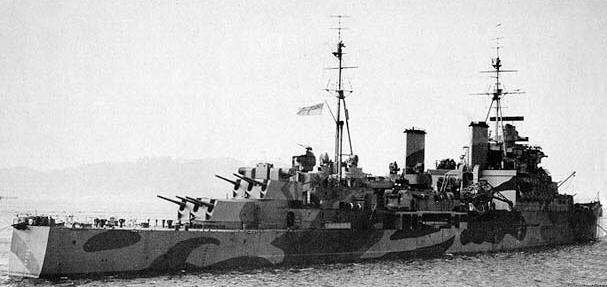 |
| HMS Trinidad, note transom
stern |
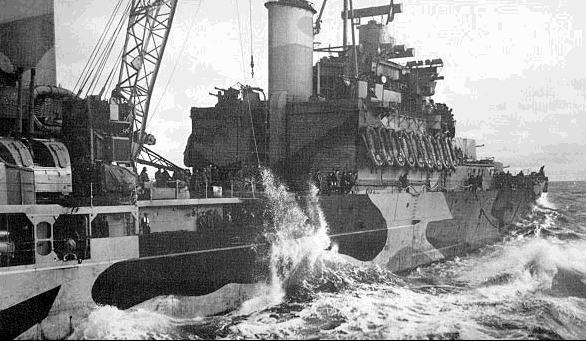 |
| Trinidad in 1941. Note
high angle of twin 4" AA to the far left |
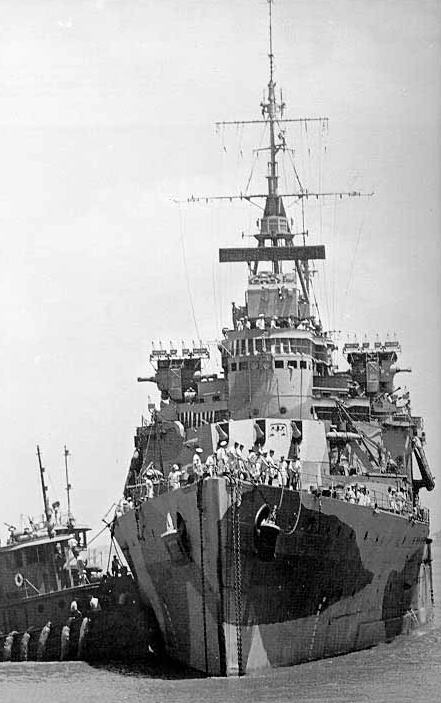 |
| Nigeria, note the RDF
fitted HA.DCTs on bridge, sheer to the bows and the
bridgework itself |
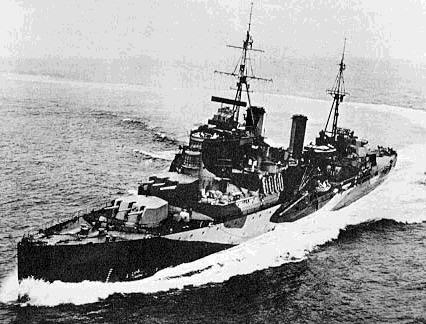 |
| Maurtirius during D-Day,
June 6 1944 |
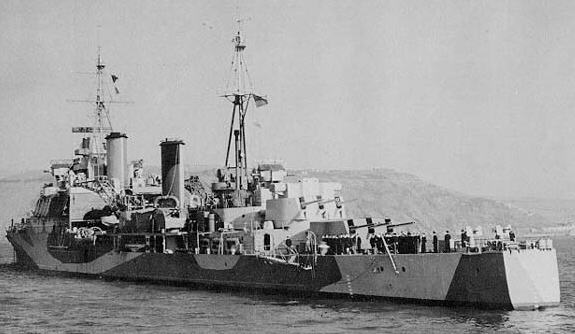 |
| HMS Mauritius in 1941,
note transom stern |
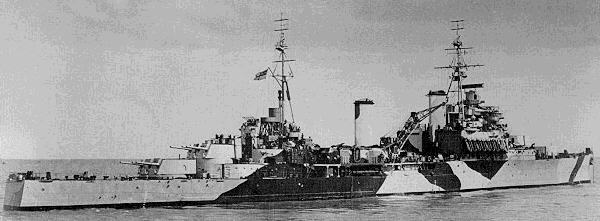 |
| Jamaica |
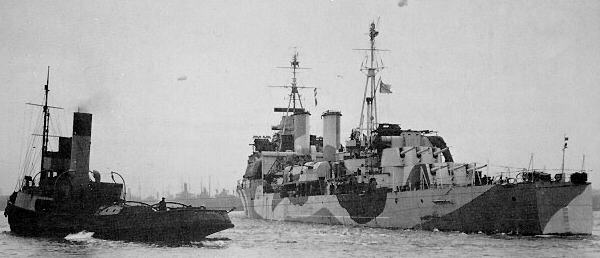 |
| Gambia in 1942 |
| |
| Fiji class Light
Cruisers |
| |
| Individual
Specification |
| Name |
Pennant |
Completed |
Builders |
Details |
| Fiji |
n/a |
5 May 1940 |
John Brown |
Sunk 22 May 1941 |
| Kenya |
C14 |
27 Sep. 1940 |
Stephens |
Paid off 1958. Broken up 1962 |
| Nigeria |
C60 |
23 Sept. 1940 |
Vickers Armstrong |
Paid off 1950. In reserve 1950-54.
To India 1954 as Mysore. Paid off 1985 |
| Mauritius |
C80 |
|










